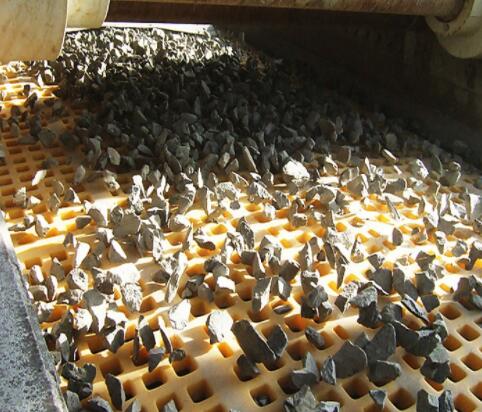
Privacy statement: Your privacy is very important to Us. Our company promises not to disclose your personal information to any external company with out your explicit permission.

Both [pegging" and [blinding" are issues quarry personnel experience every day. Truth be told, there is no miracle solution to these problems, but that doesn`t mean certain screen designs and applications are not capable of mitigating them.
Before we identify ways to curtail blinding and pegging, we need to understand the differences between the two.
Blinding occurs when screening media is exposed to fine, sticky material. When dirt, minerals and other substances adhere and bridge across the apertures, it creates a thick paste that blocks material from screening through. Pegging ensues when irregular material enters the screen apertures but is unable to pass through. This also becomes a challenge when the stone is about the same size as the holes.
A number of variables could be at the root of these issues: clay in the actual deposits, rock types, and the kind of operation you`re running can all have an impact. Essentially, the type of screening media you select must complement your quarry`s process.
Small, square apertures are to be avoided when it comes to blinding. Why? Because they provide the material too much of a surface area on which to accumulate. Using long-slot apertures with fine wires, which will emphasise vibrations and break up the paste, can solve this problem.
Keep in mind that flexibility is largely dictated by the thickness of your screen, so if you`re handling matter that tends to stick together, choosing finer media may be the best solution.
However, there are instances when the aforementioned solution isn`t much help – primarily because steel wire doesn`t possess as much flexibility as polyurethane or rubber, for example.
Blinding typically transpires when earth is exposed to water, the latter of which greases polyurethane. Essentially, water is a natural lubricant to polyurethane, allowing material to easily slip through the apertures.
Ultimately, the frequency at which pegging occurs is largely dictated by the kind of crusher a quarry uses and the type of rock the facility is processing. Splintery material and rocks shaped at an odd angle are likely to wedge in screen apertures.
So the type of screen you select isn`t the be-all and end-all to eliminating pegging, but making the right choice can mitigate the problem.
Ripple screens are designed so each wire is attached to the hooks on each end, allowing the unit to flex independently in certain areas. This allows the apertures to expand (albeit minimally) to free trapped stones intermittently.
But do you choose Polyurethane Screen or rubber one? Again, it depends on your operation.
PU Panel is the best choice of the two if you`re screening with water on the Vibrating Screen. Lubricating the screen enables trapped stone to slip through relatively easily.
Rubber is best for dry operations but the media must be designed so the bottom of the panel is slightly larger than the top. This will allow rocks to be forced through the screen once any pressure is applied.
As mentioned at the beginning of this piece, there`s no single screen design that will completely remove pegging and blinding from the equation – but at the same time there are ways to reduce these issues.
LET'S GET IN TOUCH

Privacy statement: Your privacy is very important to Us. Our company promises not to disclose your personal information to any external company with out your explicit permission.

Fill in more information so that we can get in touch with you faster
Privacy statement: Your privacy is very important to Us. Our company promises not to disclose your personal information to any external company with out your explicit permission.